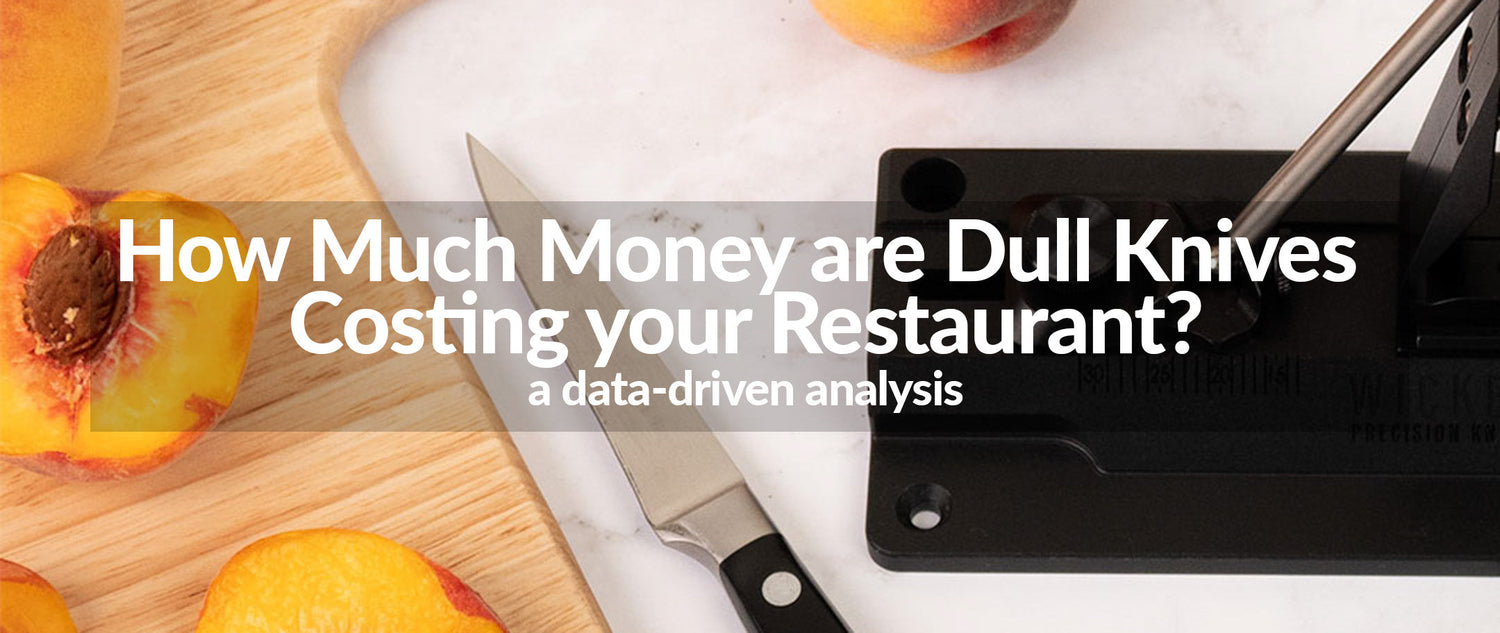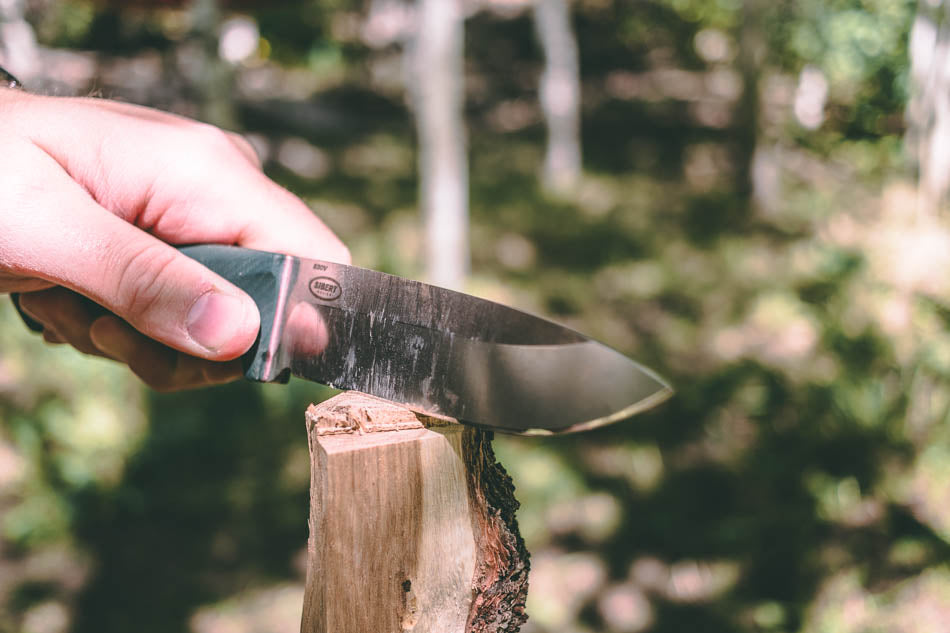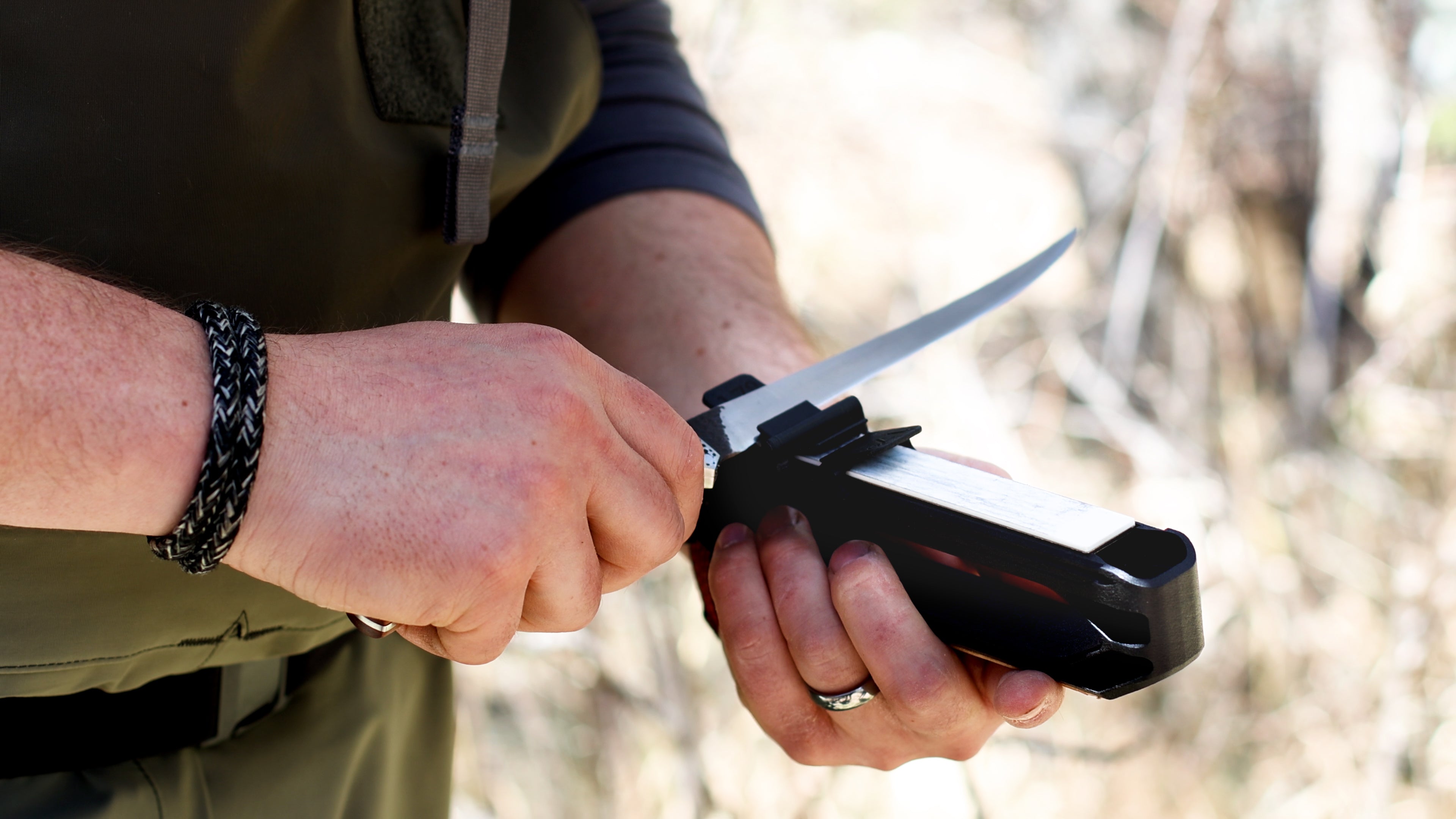Last Updated: July 2025 | Reading Time: 8 minutes
Key Takeaway: Professional sharpening services now cost restaurants $720-$1,440 annually per establishment, while dull knives increase food waste by up to 15% and reduce prep efficiency by 25%. In-house precision sharpening systems can eliminate these costs while improving food quality and kitchen productivity.
The Hidden Financial Impact of Dull Restaurant Knives
Restaurant owners face countless expenses, but one of the most overlooked cost centers sits right in their knife drawer. Dull knives don't just slow down kitchen operations—they create a cascade of hidden expenses that can cost establishments thousands of dollars annually. With current food inflation and rising service costs, these expenses have increased dramatically since many restaurants last evaluated their knife maintenance strategies.
Immediate Costs of Poor Knife Maintenance
Food Waste and Spoilage Dull knives crush and tear delicate ingredients like lettuce, tomatoes, and celery, accelerating oxidation and spoilage. Research shows that produce cut with improperly sharpened knives experiences visible oxidation 3.6 times faster than food prepared with precision-sharpened blades.
Reduced Kitchen Productivity Kitchen staff working with dull knives must:
- Process smaller batches to prevent oxidation
- Apply excessive force, increasing fatigue and injury risk
- Spend additional time re-cutting damaged ingredients
- Take frequent breaks to steel or touch up blade edges
Compromised Food Presentation Torn herbs, crushed vegetables, and uneven cuts directly impact plate presentation, potentially affecting customer satisfaction and restaurant reputation.
Cost Analysis: Professional Sharpening Services vs. In-House Solutions
Traditional Sharpening Service Expenses
Most restaurants rely on mobile knife sharpening services or exchange programs with current costs of:
- Per-Knife Costs: $6-$15 per knife depending on blade length
- Monthly Service Cost: $60-$120 per establishment (small to medium restaurants)
- Annual Cost: $720-$1,440 per restaurant
- Additional Fees: Delivery charges, taxes, and volume pricing increases
For restaurants with larger knife collections, these costs escalate significantly. Current market rates show services charging $6-$8 for smaller blades and $10+ for larger knives, with premium services charging up to $15 per knife. A typical restaurant kitchen with 20-30 knives requiring monthly sharpening could face annual costs exceeding $2,400.
The Belt-Driven Sharpening Problem
Laboratory analysis reveals serious issues with conventional belt-driven sharpening systems:
Excessive Metal Removal
- Belt-driven machines remove up to 0.0775 inches of metal per sharpening
- After 10 sharpenings, knives lose up to 0.75 inches of blade length
- Weekly sharpening results in 0.75 inches lost every 2.5 months
- Dramatically reduced knife lifespan increases replacement costs
Poor Edge Quality Microscopic analysis (500x magnification) shows belt-sharpened knives develop jagged micro-serrations that:
- Tear food fibers instead of cleanly cutting
- Accelerate oxidation and spoilage
- Require more frequent re-sharpening

Scientific Testing: Edge Performance Comparison
The Cutlery and Allied Trades Research Association conducted standardized testing comparing different sharpening methods:
Initial Cutting Performance (ICP) Test Results

Belt-Driven Sharpened Knife:
- Initial cutting depth: 47mm (Failed industry standards)
- Performance rating: Poor
- Required daily re-sharpening
Precision Sharpened Knife:
- Initial cutting depth: 109mm (132% improvement)
- Performance rating: Very Good
- Extended edge retention
Edge Durability Analysis
After 60 cutting cycles simulating normal kitchen use:
Belt-Driven System:
- Total card cut: 237mm
- Performance: Average
- Rapid edge degradation
Precision Sharpening:
- Total card cut: 549mm (131% improvement)
- Performance: Very Good
- Superior edge retention

Food Quality Impact: Real-World Testing
Controlled testing using celery cut with different knife edges revealed dramatic differences in food preservation:
Belt-Sharpened Knife Results:
- Visible oxidation after 2.5 days
- Significant browning and deterioration at 9 days
- Estimated 40% reduction in usable shelf life

Precision-Sharpened Knife Results:
- Minimal oxidation after 2.5 days
- Well-preserved appearance at 9 days
- Extended shelf life maintaining food quality and reducing waste

ROI Analysis: In-House Precision Sharpening Systems
Cost-Benefit Breakdown
Annual Savings Potential:
- Eliminated sharpening service fees: $720-$1,440+
- Reduced food waste (conservative 10% improvement): $4,000-$10,000 (based on current food inflation)
- Extended knife lifespan (3x longer): $800-$2,500
- Improved kitchen efficiency: $2,000-$5,000
Total Annual Benefit Range: $7,520 - $18,940 per restaurant
Precision Sharpening Advantages
Modern precision sharpening systems offer:
Minimal Metal Removal
- Only 0.002 inches removed per sharpening (97% less than belt systems)
- Dramatically extended knife lifespan
- Reduced replacement costs
Superior Edge Quality
- Clean, even bevels without micro-serrations
- Gentle cutting action preserving food integrity
- Extended edge retention reducing maintenance frequency
Operational Benefits
- Quick employee training (under 30 minutes)
- Consistent professional results
- Eliminated dependency on external services

Implementation Strategy for Restaurant Owners
Step 1: Assess Current Knife Maintenance Costs
Calculate your annual spending on:
- Sharpening services and fees
- Knife replacements
- Estimated food waste from poor cuts
- Lost prep time efficiency
Step 2: Evaluate In-House Solutions
Consider precision sharpening systems that offer:
- Proven edge retention testing results
- Minimal metal removal specifications
- Easy staff training requirements
- Consistent professional-grade outcomes
Step 3: Train Kitchen Staff
Implement standardized sharpening protocols:
- Establish sharpening schedules based on usage
- Train multiple staff members for redundancy
- Create maintenance logs for tracking
- Set quality standards for edge testing
Measuring Success: Key Performance Indicators
Track these metrics to quantify improvement:
Financial Metrics:
- Monthly sharpening service elimination
- Reduced food waste percentages
- Extended knife replacement intervals
- Overall food cost reductions
Operational Metrics:
- Prep time efficiency improvements
- Staff satisfaction with knife performance
- Customer feedback on food presentation
- Injury reduction from safer cutting
Conclusion: The Strategic Advantage of Sharp Knives
The data clearly demonstrates that investing in proper knife maintenance delivers substantial returns across multiple areas of restaurant operations. Beyond the obvious elimination of service fees, precision-sharpened knives reduce food waste, improve kitchen efficiency, and enhance food presentation quality.
Restaurant owners who implement in-house precision sharpening systems typically see complete ROI within 2-3 months, followed by ongoing savings and operational improvements. In an industry where profit margins are notoriously thin, addressing this often-overlooked cost center can provide a significant competitive advantage.
Ready to eliminate sharpening service costs and improve your kitchen's efficiency? Contact our team to learn about professional-grade in-house sharpening solutions specifically designed for commercial kitchens.
Related Topics:
- Restaurant Cost Control Strategies
- Kitchen Efficiency Optimization
- Food Safety and Knife Maintenance
- Commercial Kitchen Equipment ROI Analysis



